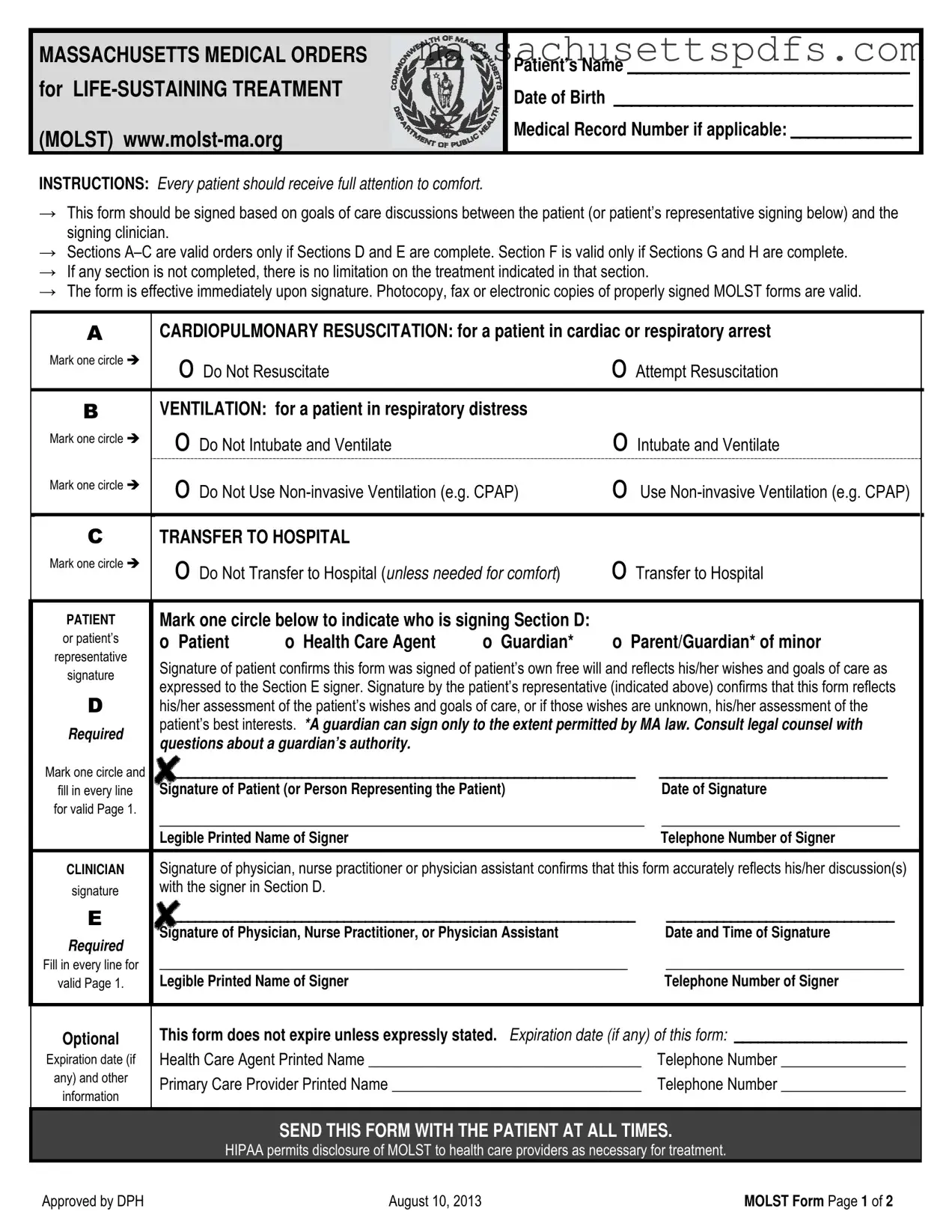Guide to Writing Massachusetts Molst
Filling out the Massachusetts MOLST form is an important step in ensuring that a patient's wishes regarding medical treatment are clearly communicated and respected. The following steps will guide you through the process of completing the form accurately.
- Begin by entering the patient’s name, date of birth, and medical record number (if applicable) at the top of the form.
- In Section A, mark one circle to indicate whether to attempt resuscitation or not.
- In Section B, choose whether to intubate and ventilate the patient or not, and indicate preferences for non-invasive ventilation.
- In Section C, decide if the patient should be transferred to a hospital or not.
- In Section D, indicate who is signing the form by marking the appropriate circle (patient, health care agent, guardian, or parent/guardian of a minor). Ensure the signer’s signature is added along with the date.
- Print the legible name and telephone number of the signer below their signature.
- In Section E, the clinician must sign and date the form, confirming that it reflects the discussions held with the signer in Section D.
- Proceed to Section F, where you will indicate preferences for other medically-indicated treatments such as intubation, non-invasive ventilation, dialysis, artificial nutrition, and hydration. Mark the appropriate circles for each treatment option.
- In Section G, again mark who is signing, and have the signer provide their signature, date, printed name, and telephone number.
- Finally, in Section H, the clinician must sign and date this section, confirming the accuracy of the discussions with the signer in Section G.
Once completed, ensure that the form is printed on bright or fluorescent pink paper for visibility. It is important to keep this form with the patient at all times to ensure that their treatment preferences are honored by all healthcare providers.
